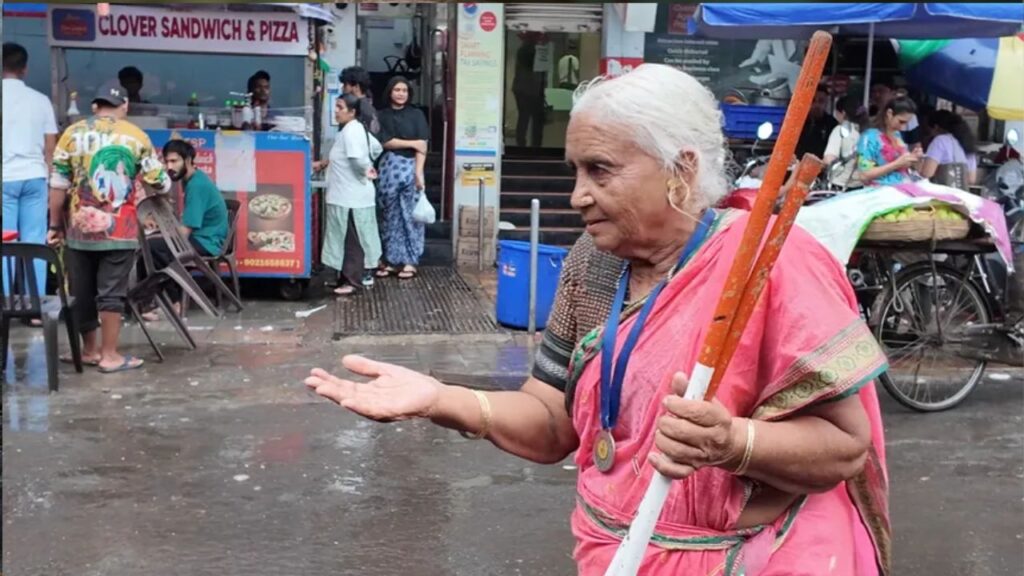At 90, ‘Warrior Aaji’ Is Back on Pune Streets, Still Fighting, Not Just for Herself but 30 Orphaned Children

At 90, ‘Warrior Aaji’ Is Back on Pune Streets, Still Fighting, Not Just for Herself but 30 Orphaned Children
Ninety year-old Shantabai Pawar, fondly known as Warrior Aaji, is a living symbol of grit and resilience. A master of the ancient martial art Lathi Kathi, her powerful strikes and unwavering spirit reflect decades of dedication to the craft. In 2020, a video of her performing on the streets of Pune catapulted her to nationwide fame, capturing the hearts of millions during the COVID-19 lockdown.
From celebrities like Riteish Deshmukh and Sonu Sood to government leaders, many extended support. She was honoured by Delhi Chief Minister Arvind Kejriwal on International Women’s Day in 2021, and briefly began teaching martial arts to others. But that was then.
Five Years Later, Back to the Same Streets
Now, Shantabai Pawar is once again back on the streets of Pune, performing her martial art in public spaces to earn money. A recent video of her was shared online by a local Pune resident. In the clip, she is seen twirling her sticks with the same passion and power, her energy undimmed despite her age.
In the video, she shares, she has been doing this art not just to stay physically strong but to carry the weight of survival, for herself and for the 30 orphaned children she looks after.
A Life of Hard Work and Martial Arts
Shantabai began learning Lathi Kathi at the age of 8. It was her father who taught her the skill, and she used it not only to protect herself but also as a way to support her family. Even during the COVID-19 lockdown, when most people were staying indoors, she would clang utensils to alert people before beginning her performance.
In her own words, the martial art gave her the discipline to endure life’s many battles, especially in the absence of a steady income or family support. Performing on the streets wasn’t just about keeping a dying art alive; it was how she managed to feed and educate the children under her care. The skills she honed from a young age became her only shield against poverty, and her lathi became a symbol of sustenance, guarding her family of 30 and giving them a chance at a better life.
A Call for Support and Recognition
Her return to the streets is not just a personal struggle, it is a wake-up call for society. Shantabai’s story reminds us of how even the most celebrated heroes can be forgotten if systems of long-term support are missing. In her 90s, she shouldn’t have to work so hard just to get by.
About Lathi Kathi
Lathi-Kathi is a traditional Indian martial art rooted in the culture of the Dombari community, a nomadic tribe predominantly found in Maharashtra. This indigenous art form combines agility, balance, and rhythm, using long wooden sticks (lathis) to perform swift and powerful movements. Historically, it served both as a means of self-defense and as a performing art used to earn a living, especially by street performers from marginalized communities.
The sport is more than just physical, it embodies a heritage of resilience and skill passed down through generations.












